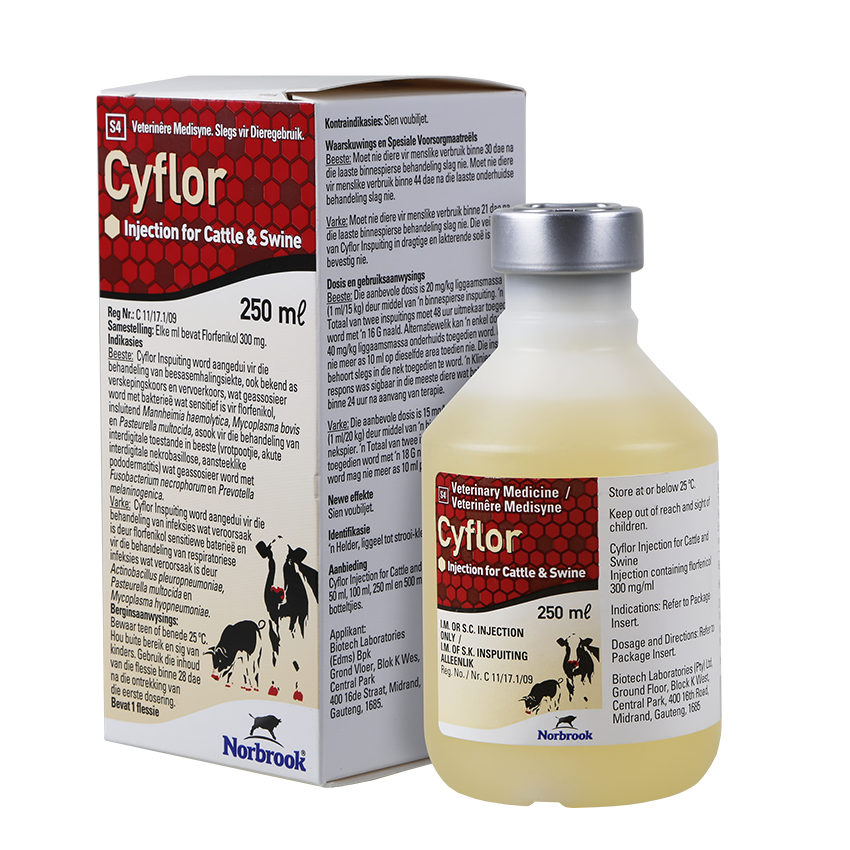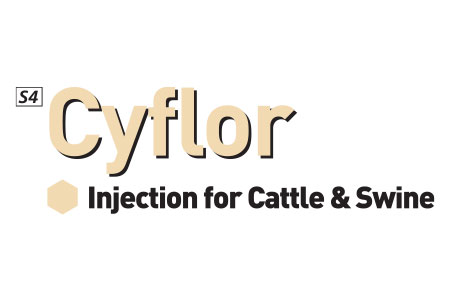


Cattle: For the treatment of bovine respiratory disease, also called shipping fever or transit fever associated with bacteria susceptible to florfenicol, including Mannheimia haemolytica, Mycoplasma bovis and Pasteurella multocida and for the treatment of bovine interdigital phlegmon (foot rot, acute interdigital nercrobacillosis, infectious pododermatitis) associated with Fusobacterium necrophorum and Prevotella melaninogenica.
Swine: For the treatment of infections due to florfenicol-sensitive bacteria and for the treatment of respiratory infections caused by Actinobacillus pleuropneumoniae, Pasteurella multocida and Mycoplasma hyponeumoniae.
Composition per ml: Florfenicol 300 mg
Refer to package insert for full prescribing information, warnings and special precautions.
Reg. No.:11/17.1/09 Act 101/1965
Alt Reg. No.:NS0 V21/17.1/1492 Act 13/2003
Species:
DOSAGE AND DIRECTIONS FOR USE:
Cattle: The recommended dose is 20 mg/kg body mass (1 ml / 15 kg) by intramuscular injection. Administer a total of two injections 48 hours apart using a 16 G needle. Alternatively, administer by a single subcutaneous injection at a dose rate of 40 mg / kg body mass. Do not administer more than 10 ml at each site. The injection should be given only in the neck. Clinical response was evident in most treated animals within 24 hours of initiation of therapy.
Swine: The recommended dose is 15 mg / kg body mass (1 ml per 20 kg) by intramuscular injection into the neck muscle. Administer a total of two injections 48 hours apart using a 18 G needle. The volume administered per site of injection should not exceed 10 ml.
Withdrawal:
Cattle:
Meat: 30 days after intramuscular treatment
Meat: 44 days after subcutaneous treatment
Swine:
Meat: 21 days after intramuscular treatment